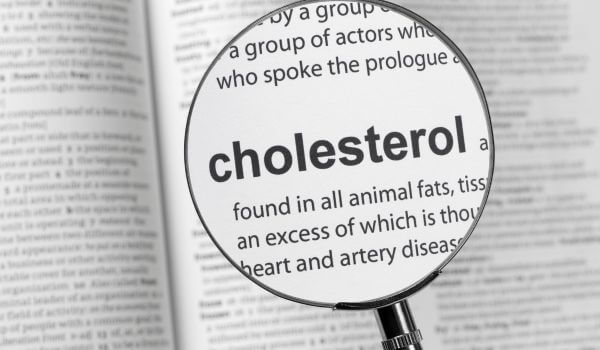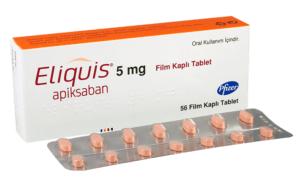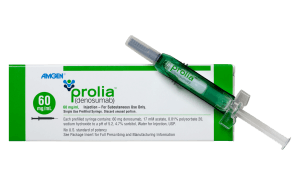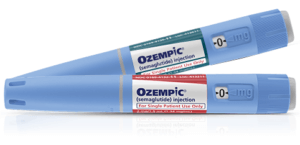At the beginning of 2025, the American College of Physicians (ACP) updated its guidelines for therapy to reduce the risk of fractures in adults with primary osteoporosis or osteopenia (low bone mass). It was the first update since 2017.
Among other recommendations, the new guidelines strongly recommend bisphosphonates as the initial therapy for postmenopausal women diagnosed with primary osteoporosis. It also suggests this for men diagnosed with primary osteoporosis, although the evidence is not as strong as for postmenopausal women.
Alternatively, the recommendations for both groups (postmenopausal women and men) who have experienced adverse effects of bisphosphonates is for treatment by Prolia (denosumab). Here again, the degree of evidence is stronger for postmenopausal women than it is for men, but the observed benefits are still strong enough to make this a viable option
What is primary osteoporosis?
Primary osteoporosis is a chronic and progressive bone disease characterized by low bone mass and structural deterioration of bone tissue, leading to increased bone fragility and fracture risk. It is not caused by other illnesses or medications, but rather is associated with aging or hormonal changes like menopause.
How does menopause affect bone health?
Menopause is the natural process that occurs when a woman’s menstrual cycles stop, and she is no longer fertile. It typically occurs between the ages of 45 and 55, and is marked by several physical and emotional changes. These changes are caused by the decline in estrogen and other hormones that regulate the menstrual cycle.
Bone density, or thickness, begins to decline as estrogen levels drop in the years leading up to menopause. This process continues after menopause, and lower estrogen levels can increase the risk of osteoporosis. Osteoporosis is a condition where bones become less dense and more likely to break or fracture. On average, women lose up to 10% of their bone density within the first five years after menopause. Around one half of women over the age of 60 will have at least one fracture because of osteoporosis.
Treating osteoporosis in menopausal women with bisphosphonates
One treatment option for postmenopausal women with osteoporosis is the use of bisphosphonates. Bisphosphonates work by inhibiting the activity of cells called osteoclasts, which are responsible for breaking down bone tissue. These medications work by slowing the breakdown of bone tissue, helping to prevent bone loss and reducing the risk of fractures. Bisphosphonates are available in both oral and intravenous forms. They may be taken as a single dose or in multiple doses over a period of time.
Bisphosphonates are also sometimes used to treat other conditions that affect the bones. One of them is Paget’s disease, which causes the bones to become misshapen and weak. They may also be used to treat cancer that has affected the bones. Cancer cells are drawn to areas where bones are breaking down. Scientists have discovered that if they can stop this process, it might slow the spread of cancer, help people live longer, and prevent bone damage.
In addition to their effects on bone tissue, bisphosphonates may also have anti-inflammatory and immune-modulating effects. Some studies have suggested that they may have potential as a treatment for autoimmune diseases, such as rheumatoid arthritis. However, more research is needed to confirm these findings.
What are the possible side effects of bisphosphonates?
While bisphosphonates can be effective in treating osteoporosis in menopausal women and preventing fractures, they are not without risks. Side effects may include gastrointestinal problems, such as nausea and stomach pain, as well as muscle, joint, and bone pain. Bisphosphonates may also increase the risk of developing a rare but serious condition called osteonecrosis of the jaw, which causes the bone in the jaw to die.
Postmenopausal women with osteoporosis need to discuss all treatment options with their healthcare provider, including the potential risks and benefits of bisphosphonates.
Treating osteoporosis in menopausal women with denosumab (Prolia)
Denosumab, marketed under the brand name Prolia, works by slowing down bone breakdown, which helps increase bone density and reduce fracture risk. Denosumab is administered via subcutaneous injection every six months and is considered a second-line treatment for postmenopausal women and men with osteoporosis.
How denosumab works
Denosumab is a monoclonal antibody that targets a protein called RANKL (Receptor activator of nuclear factor kappa-B ligand). RANKL is crucial for the formation and activity of osteoclasts, the cells responsible for breaking down bone. By blocking RANKL, denosumab reduces the activity of osteoclasts, leading to a decrease in bone resorption (breakdown) and an increase in bone density.
FDA-approved uses of denosumab
- Postmenopausal osteoporosis in women who have gone through menopause and are at increased risk of fractures.
- Osteoporosis in men who are at high risk of fractures.
- Glucocorticoid-induced osteoporosis caused by long-term use of corticosteroid medications.
- Bone loss in men with prostate cancer and women with breast cancer who are receiving treatments that can cause bone loss.
- Treatment for giant cell tumors of bone (GCTB)
Possible side effects of denosumab
The most common side effects are muscle pain, pain in the arms and legs, and skin reactions. In rare cases, serious side effects have been reported, including an increased risk of severe low calcium levels, osteonecrosis of the jaw (bone death), and serious infections.
Hormone replacement therapy for osteoporosis in menopause
Hormone replacement therapy (HRT), sometimes referred to as menopausal hormone therapy, can help prevent bone loss if started soon after menopause, typically around age 50. HRT is a treatment that includes hormones like estrogen, progesterone, and sometimes testosterone. It is used to relieve menopause symptoms that can affect daily life.
HRT comes in various doses and forms, such as pills, patches, gels, vaginal creams such as Premarin, and intrauterine devices (IUDs).
HRT can also help reduce menopausal symptoms like hot flashes, vaginal dryness, trouble sleeping due to night sweats, joint pain, and itchy skin. It might also provide benefits such as better skin and hair health, fewer headaches, less irritability, improved sleep, increased sex drive, and better balance, as well as relief from dizziness and vertigo.
Hormone therapy can be advised when treating osteoporosis in menopausal women, because it can also help lower the risk of certain long-term health issues that accompany menopause. These include conditions like weak bones and fractures, heart disease, cancer of the lining of the uterus, colon cancer, type 2 diabetes, and cataracts. The benefits can depend on the dose and how long the therapy is used.
For those who do not wish to use HRT, natural alternatives to help balance hormones are available, such as the Women’s Hormone Support Pack. The ingredients in this pack are designed to help regulate hormonal fluctuations throughout a woman’s cycle, from menstruation to perimenopause.
Side effects of HRT
People have different reactions to HRT. Some may not experience any side effects, while others could have symptoms like nausea, water retention, breast tenderness, or vaginal bleeding. Most of these symptoms usually go away within the first three months of starting HRT.
Reducing the risk and symptoms of osteoporosis naturally
A healthy lifestyle can help lower the chances of developing osteoporosis and aid in symptom management for those already diagnosed with the condition.
Calcium and vitamin D
The recommended daily amount of calcium is around 1,300 mg. This is roughly the same as having three to four servings of dairy, such as yogurt. Other great sources of calcium include firm tofu, almonds, dark green leafy vegetables, and fish with bones that can be eaten, like sardines. If someone is not able to get the recommended amount of calcium from food sources, a supplement may be recommended. Look for a supplement that contains calcium citrate, like The Bone Pack, rather than some other forms of calcium, like calcium carbonate, as calcium citrate is much more easily absorbed.
Vitamin D is important because it helps the body absorb calcium. The body produces it in the skin when exposed to sunlight, and it is also found in small amounts in certain foods. The Bone Pack also contains vitamin D for the calcium to absorb, but more may be required if blood levels are low. A blood test can determine vitamin D levels, and some individuals might need to take additional supplementation.
Lifestyle changes
It is important to cut back on or quit habits like drinking alcohol, drinking coffee, and smoking. Regular exercise is also key to keeping bones healthy. It helps build stronger muscles, improves balance and fitness, and lowers the chance of falls and broken bones.
Certain types of exercise help improve bone health. These include weight-bearing activities like stair climbing, jumping rope, running, playing tennis, and dancing. Strength training, such as using weight machines, lifting dumbbells, doing push-ups, or performing squats, is also beneficial. It is recommended to consult a certified trainer, exercise physiologist, or physical therapist before beginning any new exercise routine.
Diets for osteoporosis and menopause
The best diets for both osteoporosis and menopause contain anti-inflammatory foods as well as ample amounts of calcium. The Mediterranean diet is a great example and is easy to follow. It is recognized for its ability to reduce inflammation, which can help lessen symptoms of arthritis in people with certain forms of the condition.
The Mediterranean diet emphasizes eating plenty of fruits, vegetables, whole grains, beans, seeds, nuts, and healthy fats like olive oil. While it is mostly plant-based, it also includes moderate amounts of seafood high in omega-3 fatty acids, dairy, and poultry.
Supplements for osteoporosis in menopause
Aside from calcium and vitamin D supplementation, which may be suggested by a practitioner, there are other natural supplements that can help with bone health and the inflammation associated with osteoporosis, as well as supplements that can alleviate the symptoms of menopause. The Inflammation Pack is a dietary supplement designed to help reduce inflammation by providing important minerals and oils. It includes quercetin, a flavonoid that works with turmeric root to offer strong anti-inflammatory benefits. For those lacking fatty acids in the diet, the supplement provides vegan omega-3 fatty acids, which are purified to remove metals, PCBs, dioxins, and pesticides.
Lifestyle adjustments for osteoporosis
Maintaining a healthy diet, managing weight, improving muscle strength, and practicing safe joint movements can benefit anyone with osteoporosis. Joints can be protected by relying on stronger muscles. For instance, instead of putting strain on fingers or wrists to push open a heavy door, the arms or shoulders should be used instead. When climbing stairs, stepping up with the stronger leg first and stepping down with the weaker leg can help reduce stress on the hips or knees.
Making changes at home can also improve safety and make everyday activities easier. Furniture with wheels can be moved more easily for cleaning. A grab bar installed above the bathtub can offer extra support, and a non-slip mat in the tub can help prevent falls.
All of these changes, alongside the medication prescribed for osteoporosis, can go a long way in reducing the risk of fractures and maintaining independence.
Save by buying from IsraelPharm
| Drug name | Strength | Format | IsraelPharm price | US retail price |
Bisphosphonates |
||||
| Boniva | 150 mg | Oral | $22.00 | $74.00 |
| Fosamax | 70 mg | Oral | $8.00 | $49.50 |
| Actonel | 150 mg | Oral | $118.00 | $426.00 |
| Actonel | 150 mg | Oral | $118.00 | $426.00 |
| Reclast | 5 mg/100cc Vial | Injection | $259.00 | $1833.00 |
Denosumab |
||||
| Prolia | 60 mg Vial
120 mg Vial |
Injection
Injection |
$550.00
$1049.00 |
$2535.00
$4052.00 |
Prices are per tablet/vial and are correct at the time of publication, but are subject to change
Common questions about menopause and osteoporosis
Can you rebuild bone density after menopause?
As women go through menopause, lower estrogen levels can lead to noticeable bone loss, which raises the risk of developing osteoporosis. Although it’s not possible to fully restore bone density by treating osteoporosis in menopausal women, making healthy lifestyle choices can help slow the process of bone thinning and promote better overall bone health.
Is osteoporosis due to lack of estrogen?
Osteoporosis is a major health issue that affects many women as they age, especially after menopause. This condition usually develops because of bone loss caused by lower estrogen levels. After menopause, the body breaks down bone faster than it can rebuild it, creating an imbalance that weakens the bones over time.
What is the relationship between menopause and osteoporosis?
Osteoporosis occurs when bones become weak and are more likely to fracture, often due to low bone mineral density. After menopause, the body produces less estrogen, a hormone that plays a key role in maintaining bone strength. This drop in estrogen increases the risk of osteoporosis in women, making their bones more fragile over time.
How do you know if you have osteoporosis in menopause?
Symptoms of this condition include persistent back pain, often resulting from a fractured or collapsed spinal bone. Over time, individuals may notice a gradual loss of height and the development of a hunched or stooped posture. Additionally, bones may become so weak that they break much more easily than anticipated.
Does treating osteoporosis in menopausal women improve bone density?
Maintaining strong bones involves several important lifestyle choices. A balanced diet that includes foods high in vitamin D and calcium is essential for bone health. Spending time outdoors is also beneficial, as sunlight helps the body produce vitamin D naturally. Managing weight is another key factor, as preventing obesity can reduce stress on the bones and keep them strong. Additionally, avoiding smoking and limiting alcohol consumption can lower the risk of bone loss and promote overall bone health.
What is the best bone supplement for menopause?
Calcium plays a key role in maintaining strong bones, and taking calcium supplements can help counteract the natural loss of bone density that occurs during menopause. Similarly, vitamin D is vital for helping the body absorb calcium effectively. This makes vitamin D supplements especially important for people living in areas with limited sunlight.















